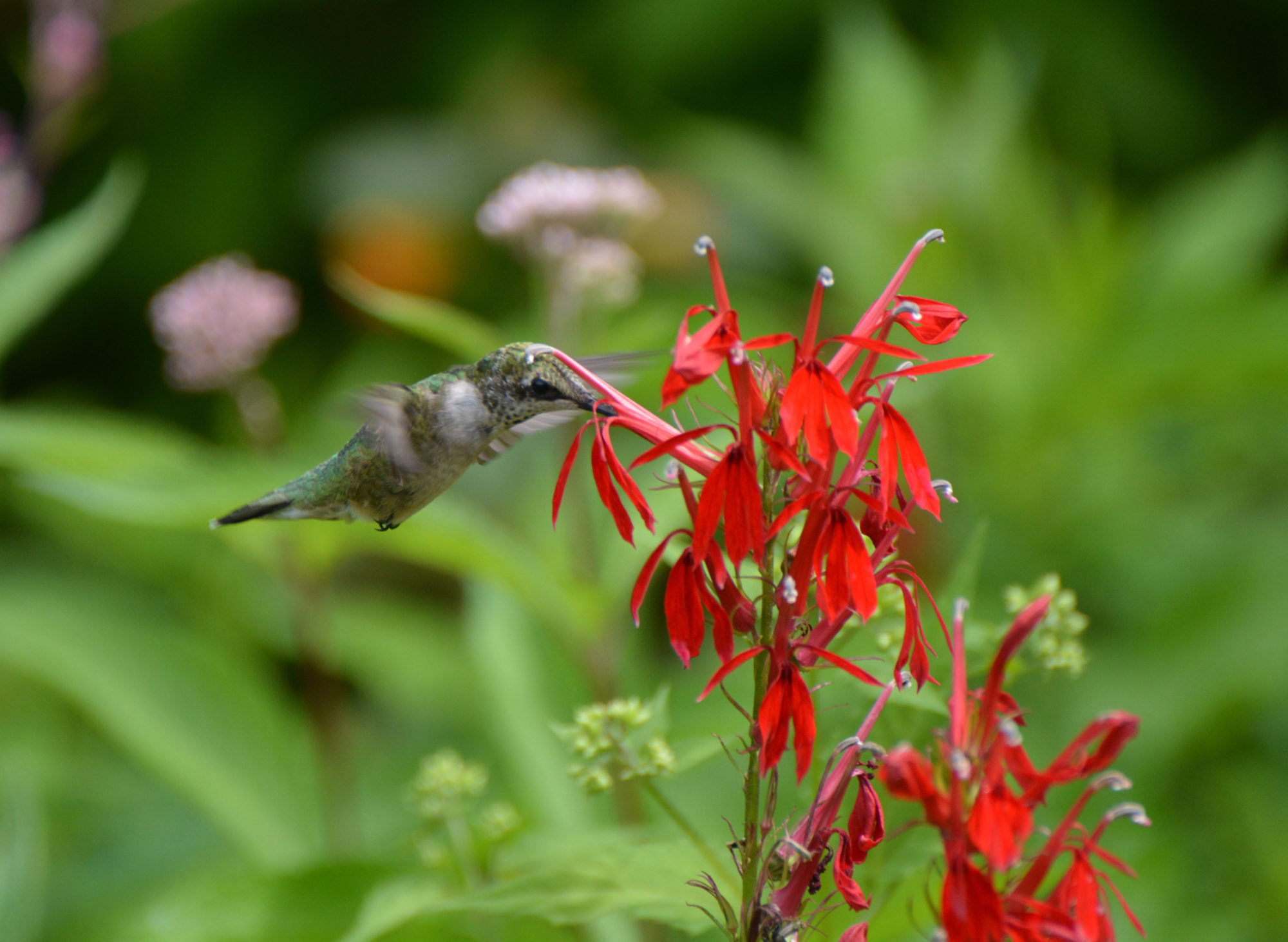HGCNY is excited to be part of this Baltimore Woods project! It will be a wonderful opportunity to watch a forest grow and develop “from the ground up” and to observe the life it will support.
Here’s more information about oaks and here’s more information about forests.
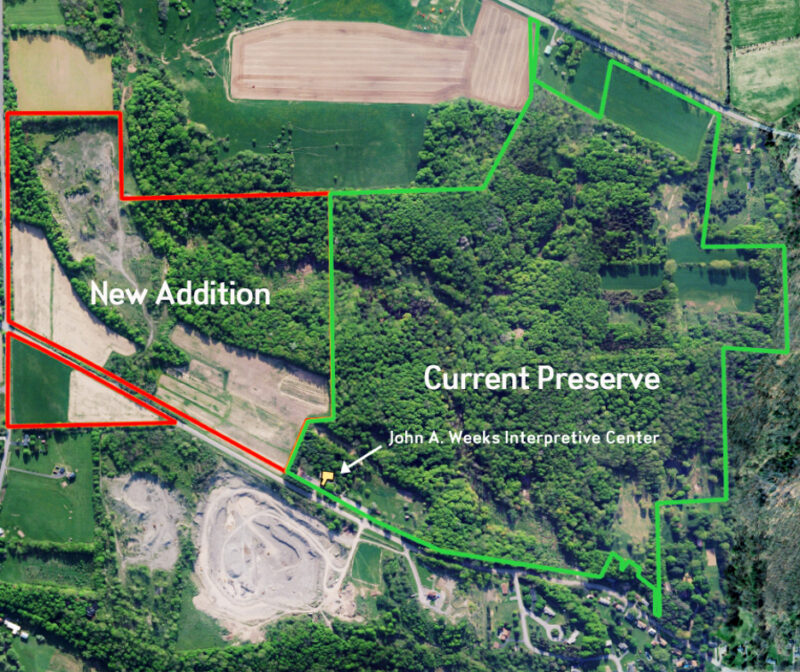
This map from Baltimore Woods shows the new addition where the forest will be planted.
You can see the cornfield at the center left of the photo. It’s part of the Baltimore Woods Nature Center’s “Expanding Boundaries” campaign.
Project timeline
We’re documenting this project as it develops over the years.
Summer 2021
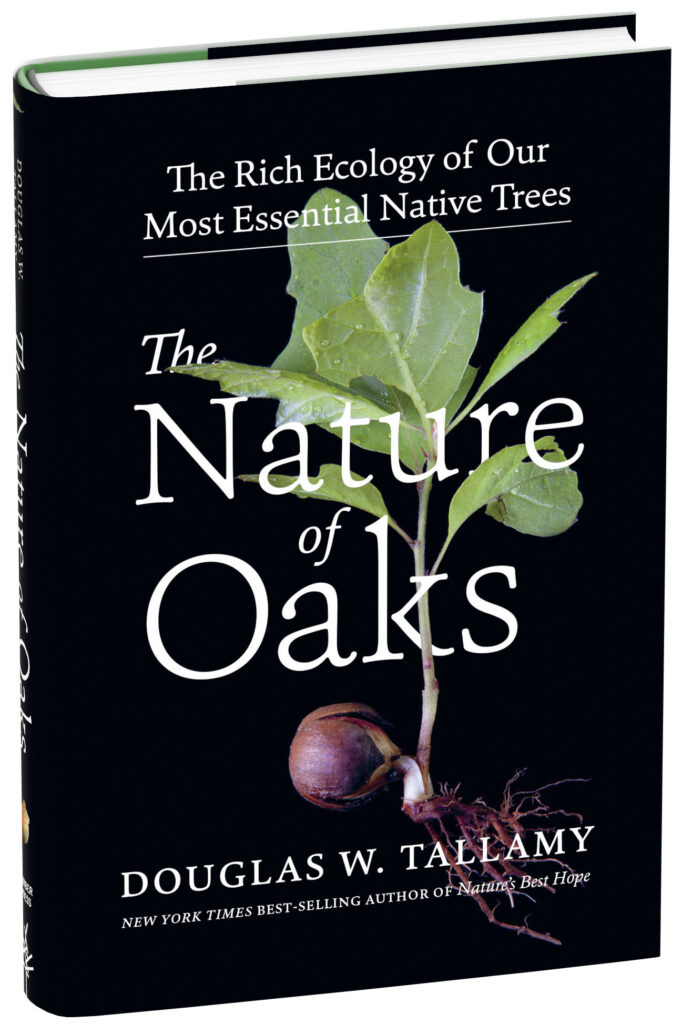
Inspired by Douglas Tallamy’s book, The Nature of Oaks, a couple of HGCNYers wondered “Where could we plant some oaks?”
Knowing that Baltimore Woods Nature Center was about to add a large piece of land — some of which was currently a cornfield — we thought a part of that field could become an oak grove.
This new forest would feature native oaks, but also include other native trees and all the layers of a healthy forest appropriate for Central New York.
We broached this idea to David DuBois, the Land Steward at Baltimore Woods, who was very enthusiastic. Soon a committee from our HGCNY Planning Group was at Baltimore Woods to look at the site and talk with David and Whitney Lash-Marshall, the director of Baltimore Woods. The members of the committee concluded that this indeed is a very appropriate project for HGCNY. It will not only help regenerate a healthy forest, but will be an educational resource for HGCNY and for the Central New York community.
Fall 2021
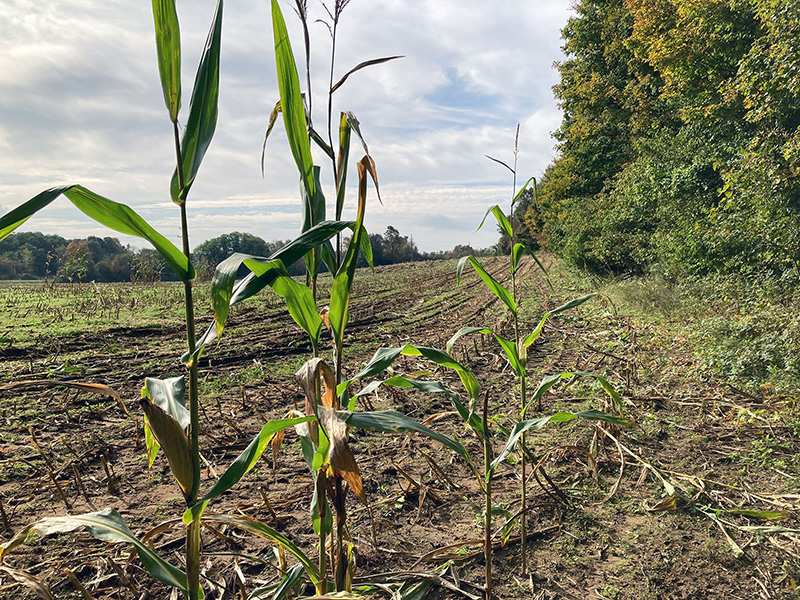
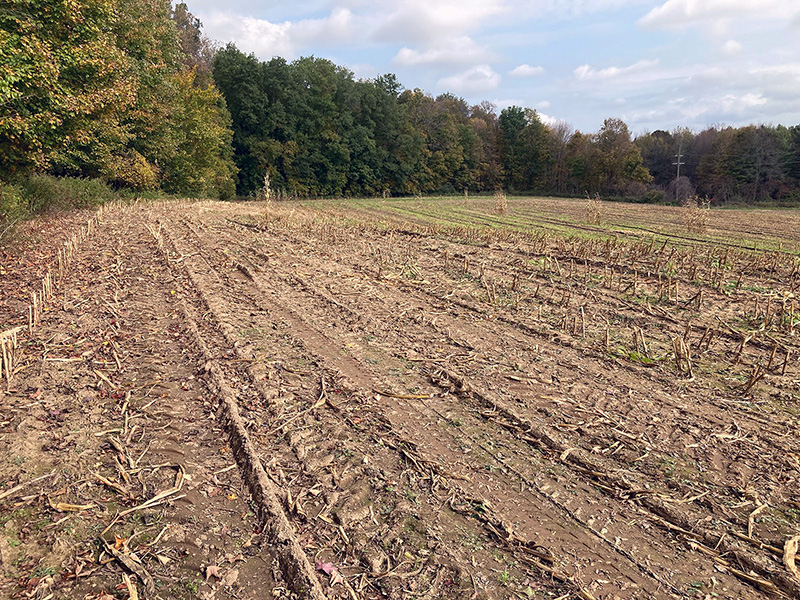
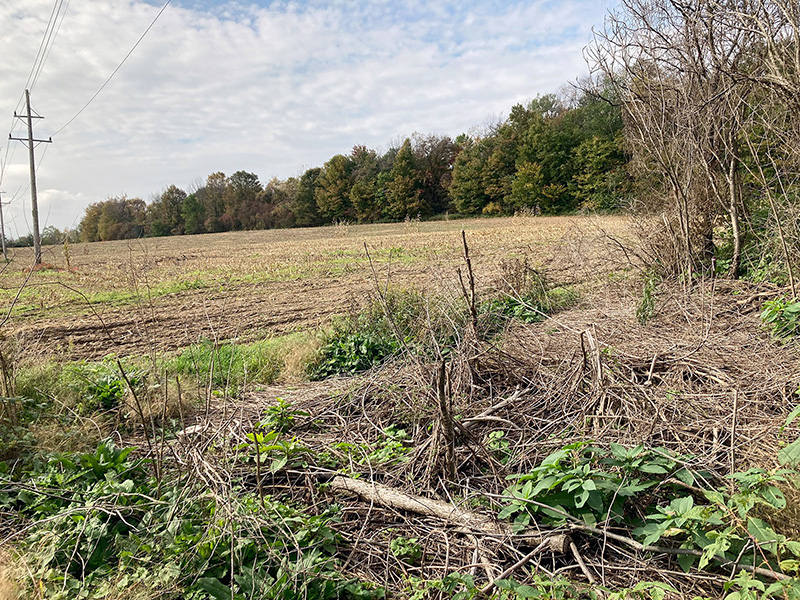
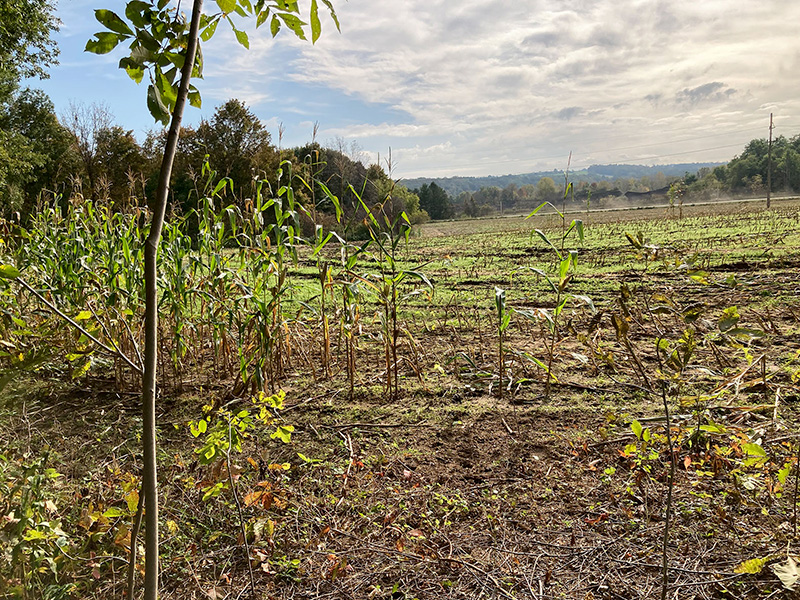
Winter 2022
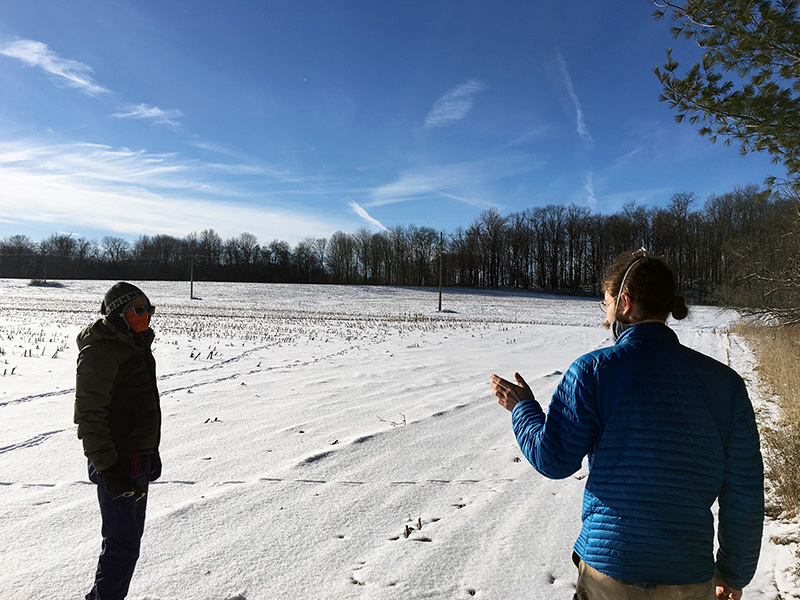
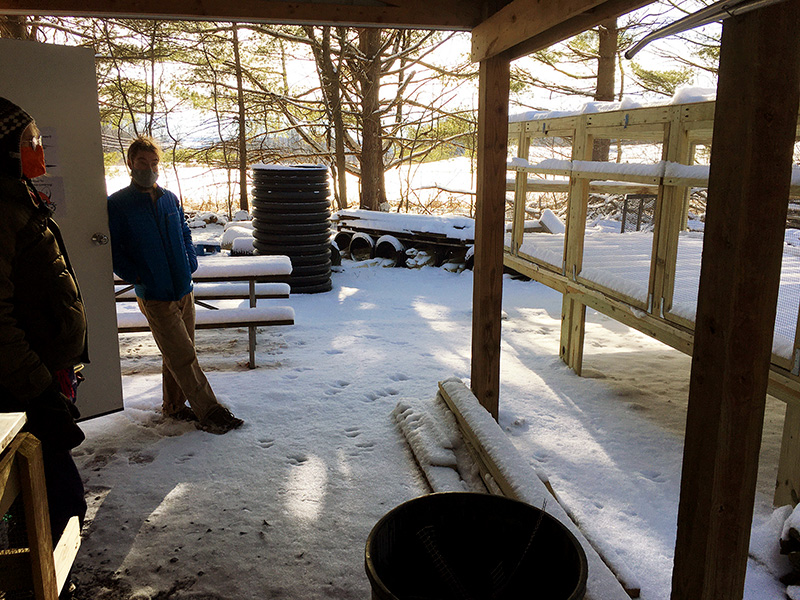
In fall 2021 and winter 2022, Baltimore Woods volunteers created a tree nursery enclosure for this project.
They potted up seeds (including acorns), covered them with hardware cloth, and put them under mulch in preparation for planting in the spring.
Photo: Carol Biesemeyer
Spring 2022
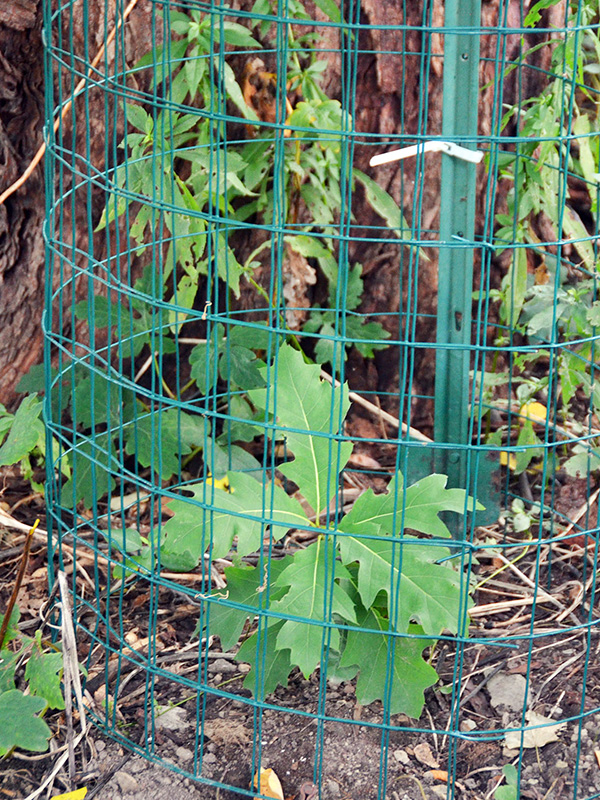
Most people have experienced damage to plants due to deer browsing. This is an especially difficult problem for seedlings, such as our planned oak and other seedlings.
This HGCNYer planted a small oak seedling in their yard and protected it with a circle of fencing. This is a fine solution for a single seedling tree in a single yard, but for a large planting over a large area, fencing off the entire area is a better solution.
This is where HGCNY comes in!
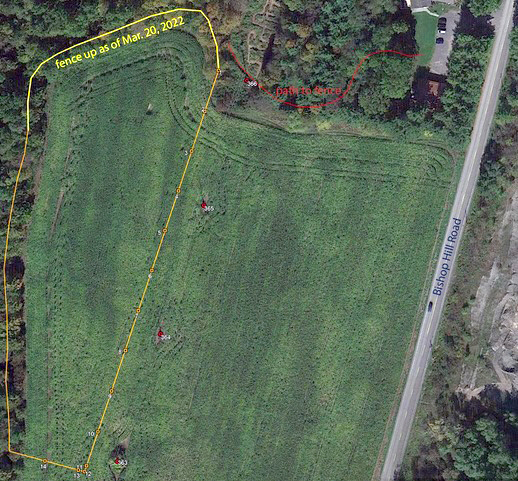
As the snow melted away, construction of deer fencing around about four acres of the corn field began in Spring 2022. HGCNY has allocated $3,000 toward that construction.
The yellow line shows the planned location of the fence.
The brighter yellow line indicates the fence that had been installed as of March.
The deer fence is being installed in preparation for planting. The fence is 8 feet high and in the forest at the edge of the field is attached to trees.
Here HGCNYer Tom Long is working on the project. He has been joined by fellow HGCNYers John Allen, Dave Mitchell, and Randy Nonemacher, who is directing the fencing project, along with various Baltimore Woods volunteers.
The deer exclosure that goes along the edge of the forest was done by the end of March.
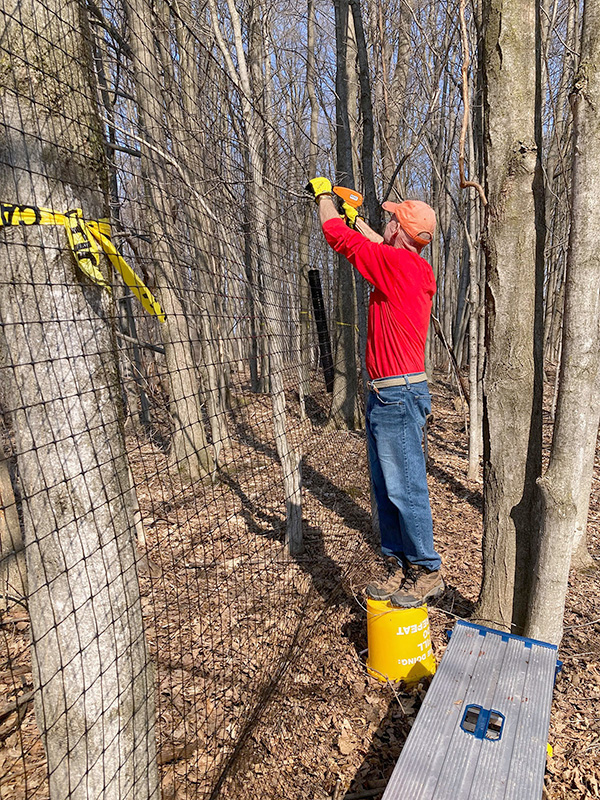
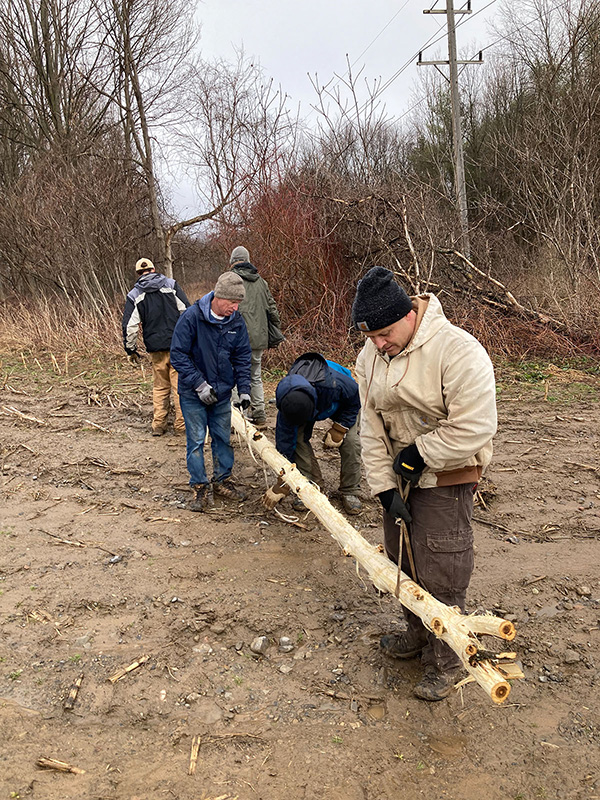
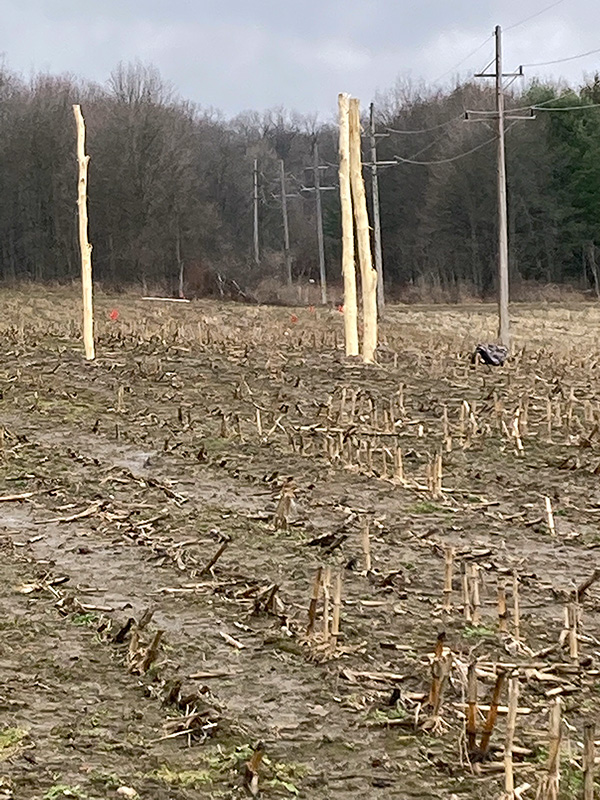
Here are the beginning steps to put up the fence in the cornfield. There, the fencing will be supported by long black locust posts set 3 to 4 feet in the ground, with metal posts in between to hold the cord supporting the fencing. There will be an additional wire installed 2 feet above the 8 ft fence so a deer would have to jump 10 feet to get over. The big posts have been stripped of their bark and volunteers have carted them to the fence location where they will go into holes like the three posts in the second photo.
Fall 2022
These four photos are taken from the same location as the photos shown above in Fall 2021.
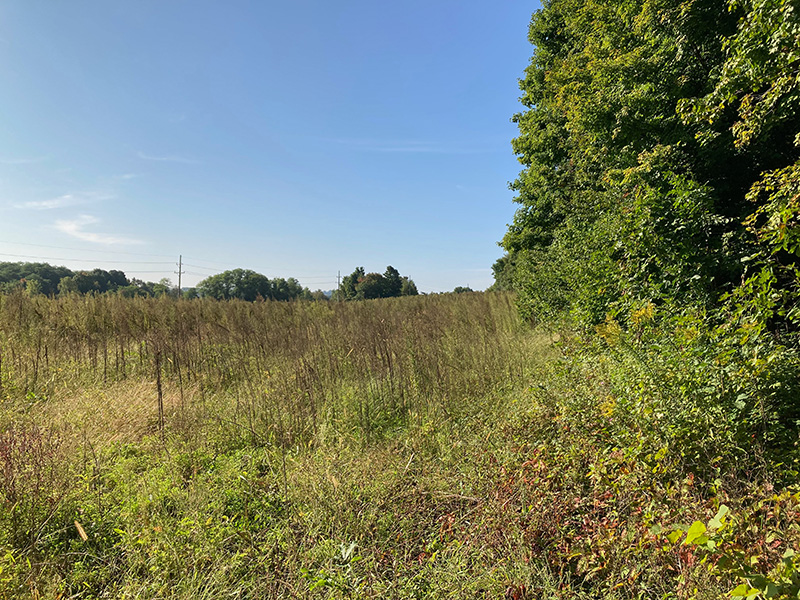
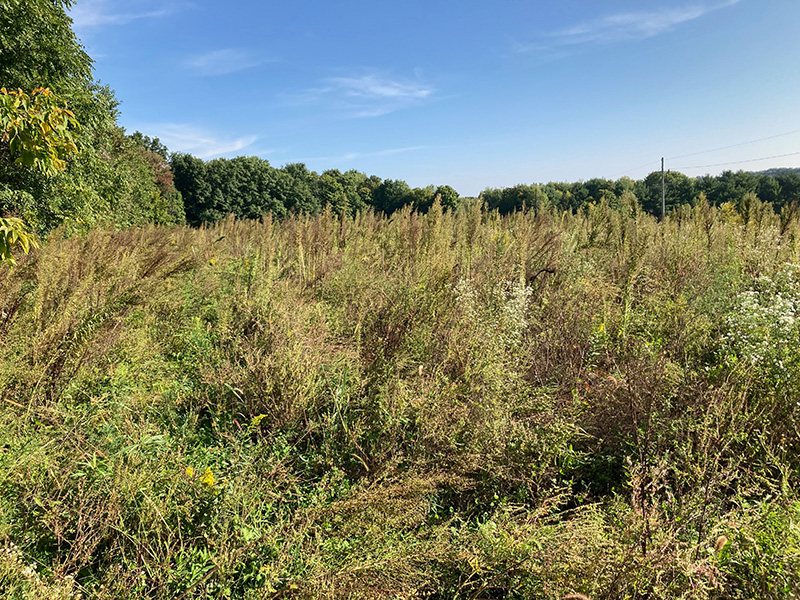
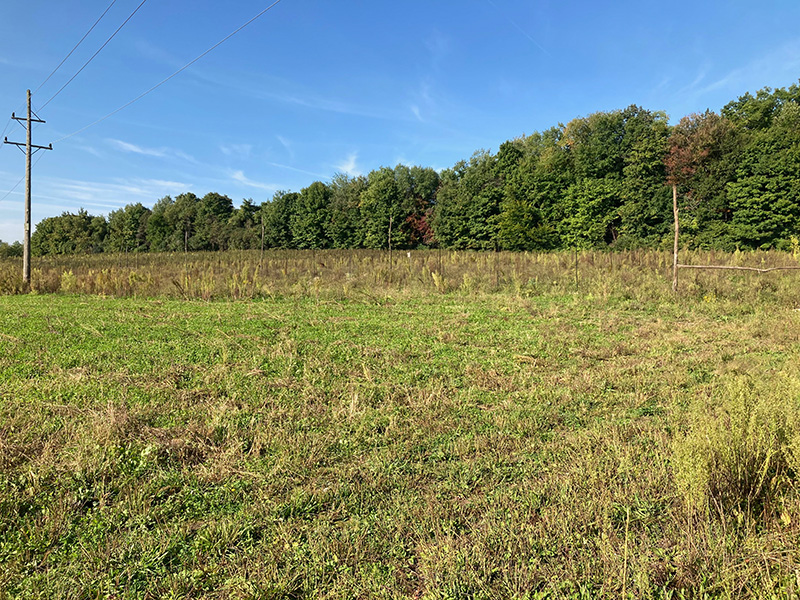
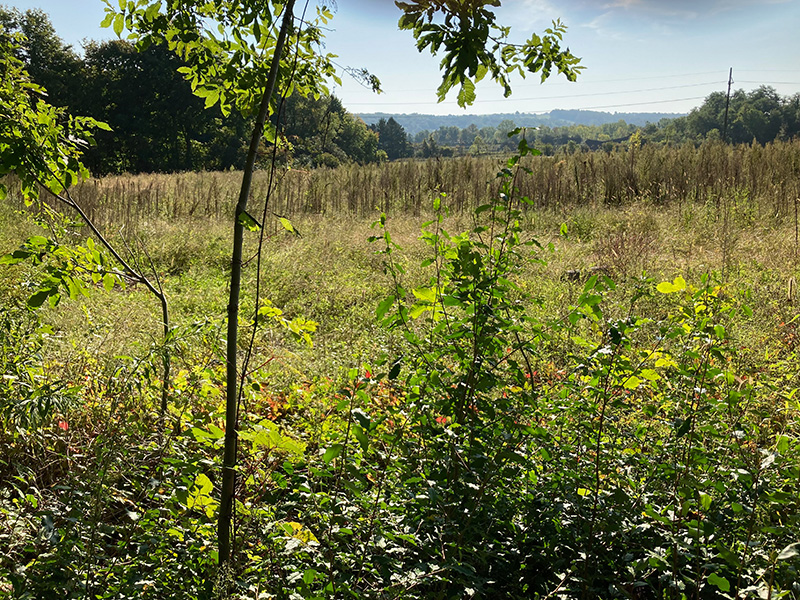
September 2022 tour
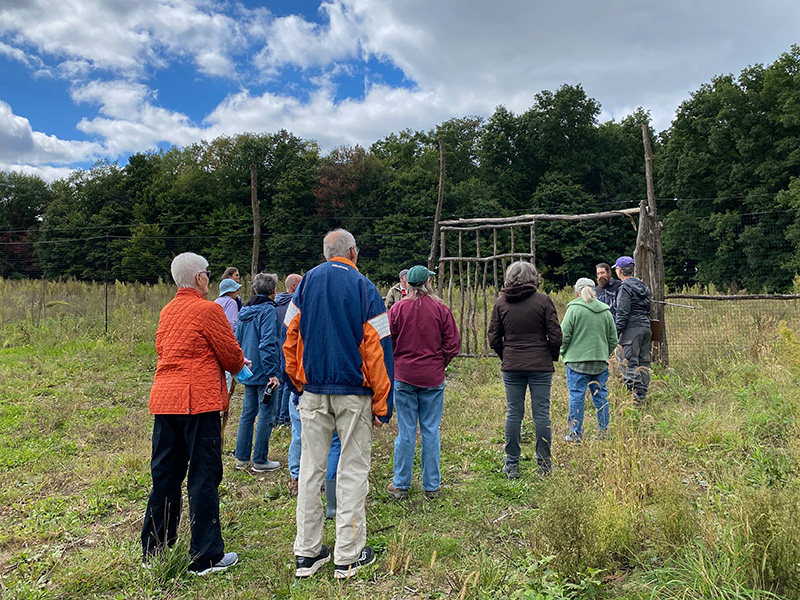
Our September meeting featured a tour of the new reforestation project at Baltimore Woods.
Here’s our group is at the gate of the fence HGCNY helped fund. The fence was a critical part of the project since the new tree seedlings would be unlikely to survive deer browsing.
David DuBois, the Baltimore Woods Land Steward and our guide for the tour explained the many opportunities this project offers: regenerating the native forest that existed here a hundred years ago, of course, but also being able to offer nature center visitors a chance to learn about and connect with the natural world.
It was interesting to learn that even though this area originally included oaks, the nature center land currently does not have any oaks! We’re looking forward to seeing them return.
In addition to oaks, a variety of other trees will be planted — even chestnut trees!
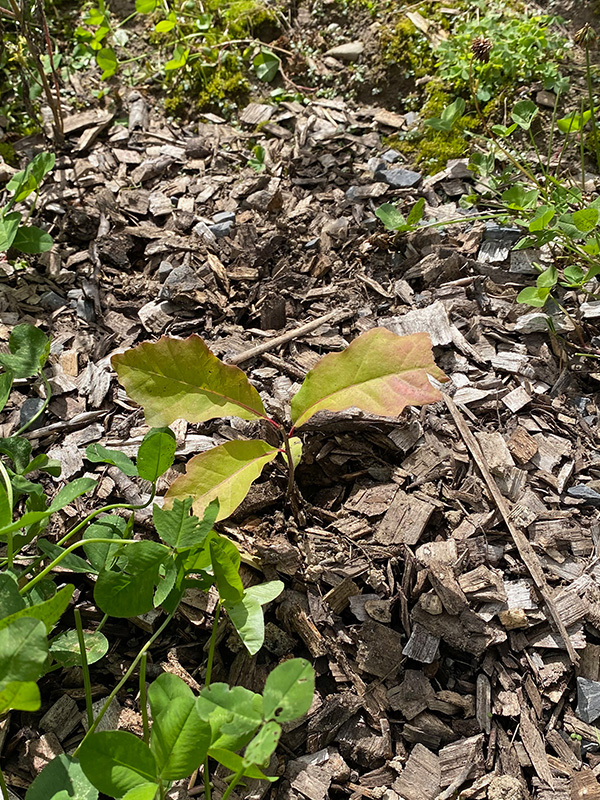
Here’s one of the many oak seedlings we saw on our tour around the field.
On April 23, 2022 about ten HGCNYers helped plant the acorns and other nuts and seeds from which seedlings like this grew.
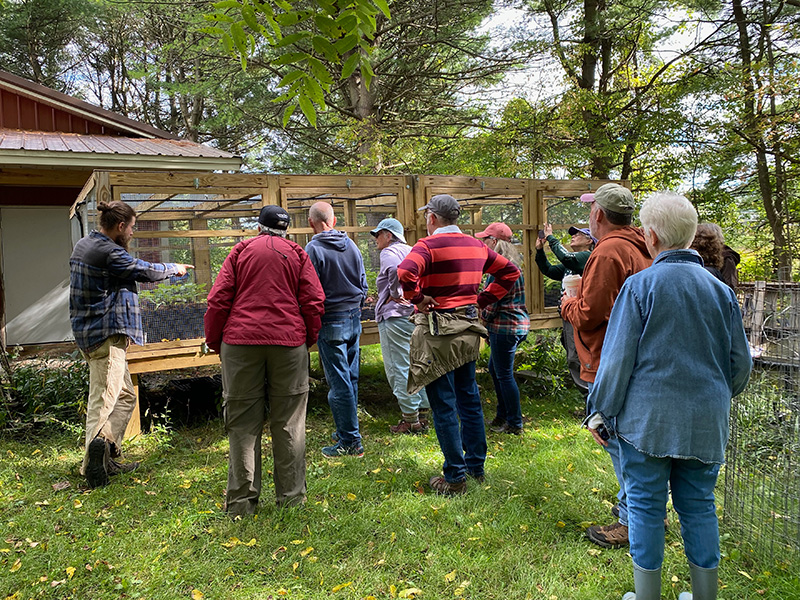
There are hundreds and hundreds of seedling trees that were planted last year and are ready to plant.
Some SUNY-ESF students will be helping, but HGCNY are encouraged to help, too.
From above
Randy Nonenmacher, an HGCNYer, took some drone photos of the beginnings of the cornfield to forest transformation. It will be exciting to see the growth of a forest over the years!
October 2022: The fence is visible running parallel to the power line in the photo on the left, and more of the path we took on our recent program is visible in the photo on the right.
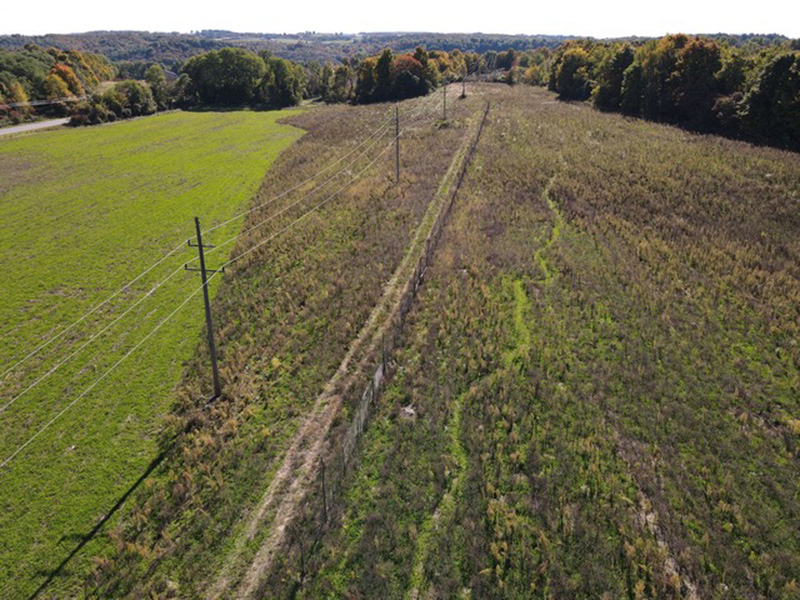
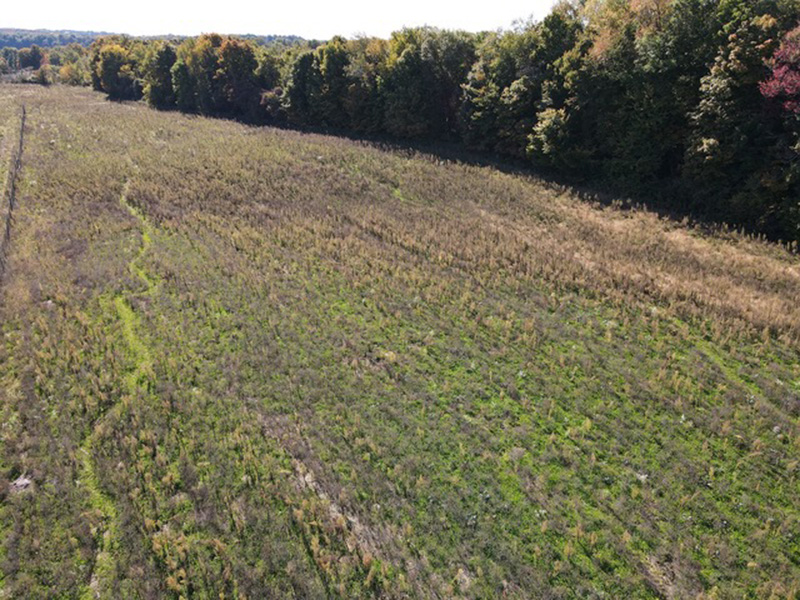
Summer 2023
One important project was clearing weeds away from our small trees.
Those little trees are beginning to grow but face certain obstacles, principally creatures (rabbits, maybe?) chewing them, frost which set them back, and weeds. Now many of the trees have been caged but, as can be seen from the photos below, cages do not keep out weeds. Weeds, of course, continue to grow faster than little trees, so the process is ongoing.
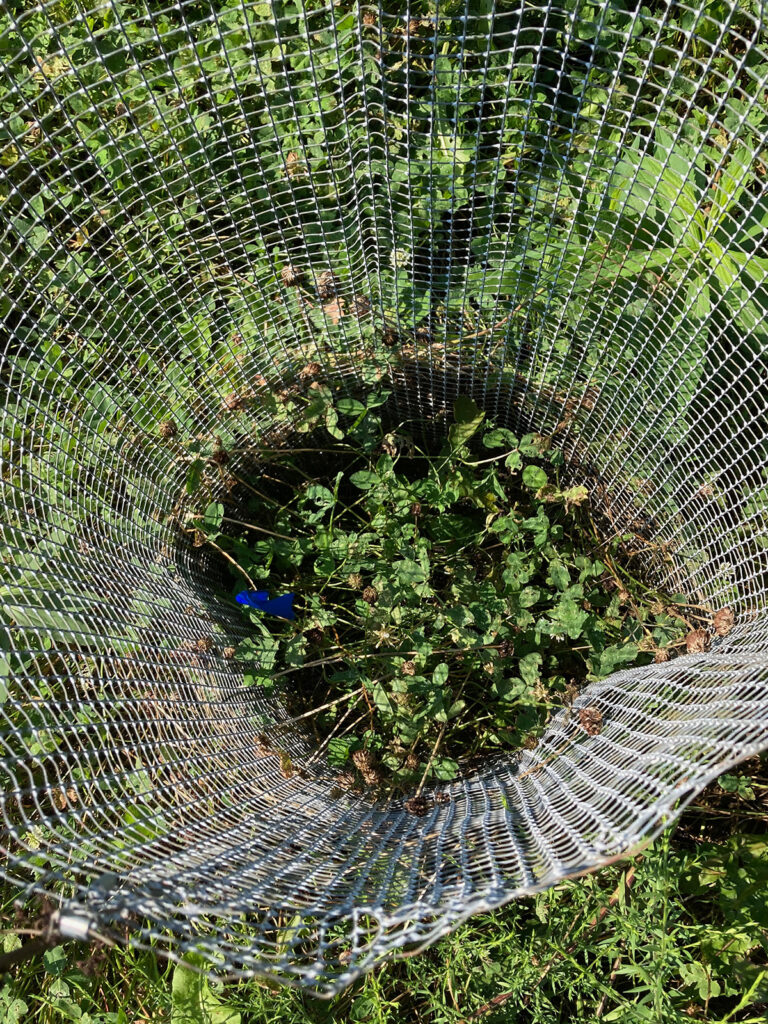
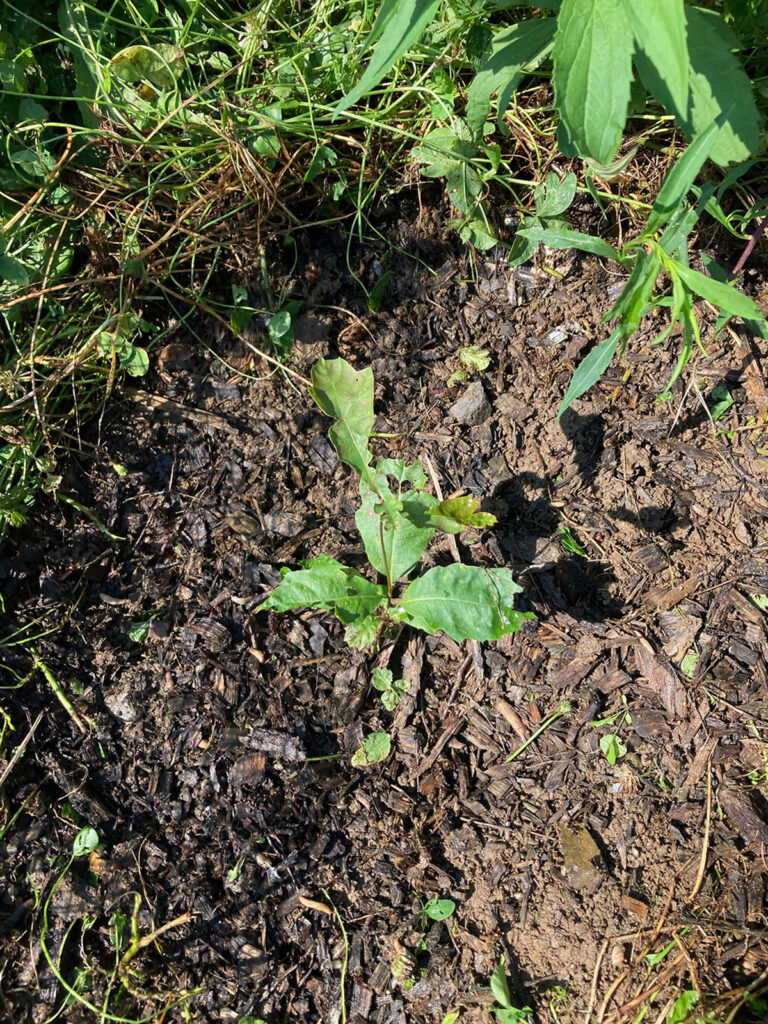
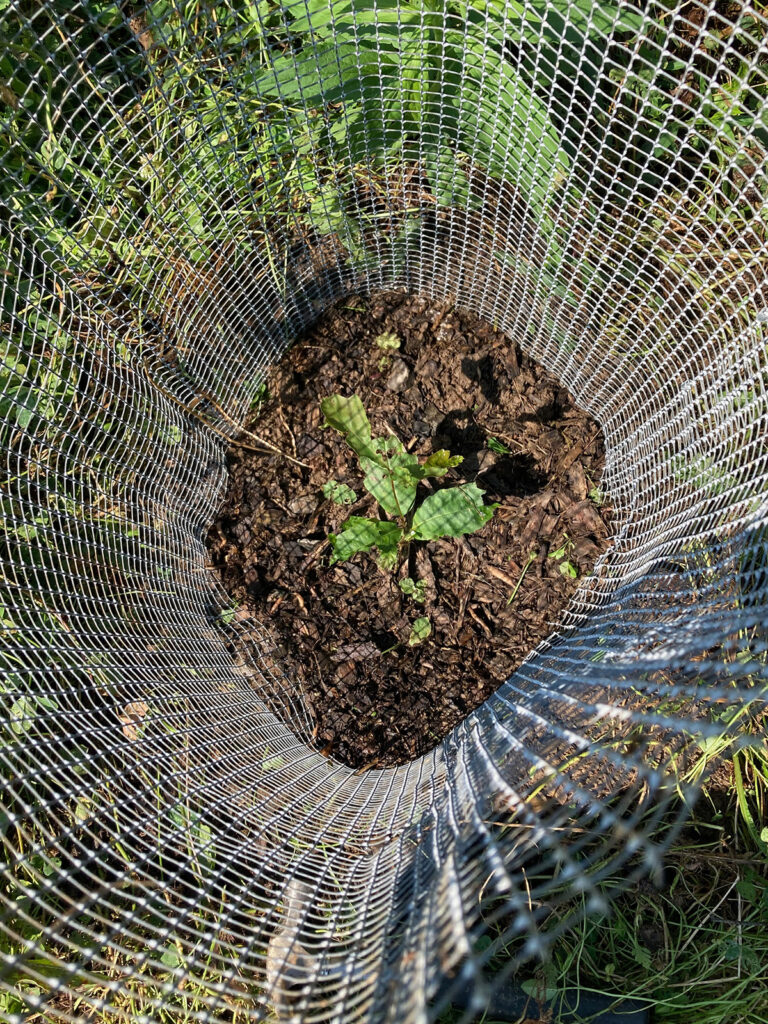
Photo 1: Where’s the tree? Here’s what the trees look like before we weed: They’re protected from the deer and rabbits, but hidden in the weeds (mostly clover).
Photo 2: The trees are in there and growing well! We remove the weeds around the tree seedling to help it continue to grow.
Now they can grow! We replace the protective cage and someday they’ll be large trees making up a new forest!
Opportunities to participate
- Monitoring inside the fence, weeding and making sure seedlings are surviving (possibly mulching or responding to emerging invasive problems).
- Planting tree seedlings in the fall
- Participating in some community science projects, which could include eBird, BudBurst, and monarch community science projects, and more.
And, of course, we can all spread the word about the importance of preserving existing healthy forests and regenerating new forests full of a diversity of native plants!
Resources
- Baltimore Woods:
- Baltimore Woods Nature Center – non-profit nature center in CNY
- Baltimore Woods Expanding Boundaries Campaign – Help Baltimore Woods grow!
- Audubon New York:
- SUNY Oswego Rice Creek Field Station:
- Canal forest restoration project – Another local project
- Wild Ones:
- The Nature of Oaks, a video presentation by Doug Tallamy – A must-see!!
- This HGCNY website:
